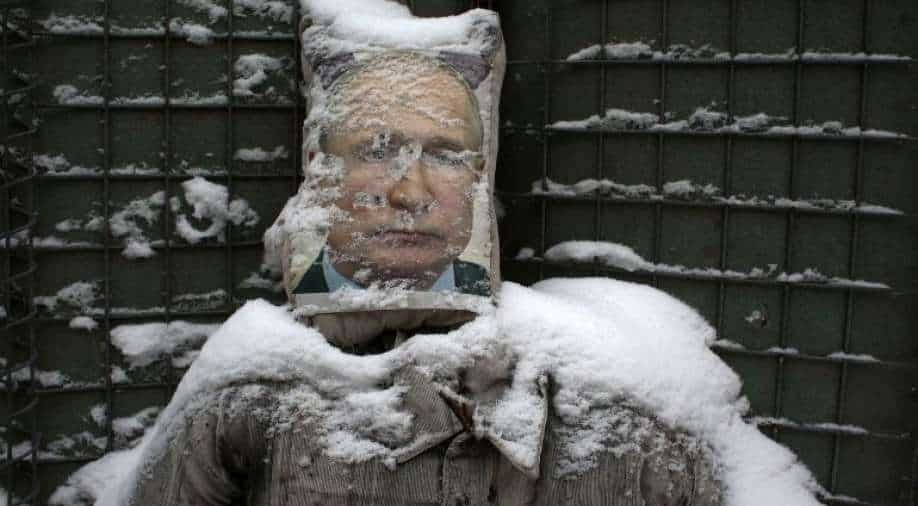Russian-Ukrainian tensions: what is really going on? Here’s what you need to know, World News
Tensions between Russia and Ukraine that could potentially lead to full-scale war are shaped by a struggle for strategic influence and a dispute over territorial borders.
Ukraine is seen by Moscow as a crucial buffer for the North Atlantic Treaty Organization, or NATO.
Russia is seen by Ukraine as an invader who has already taken parts of its territory.
Here are some points that will help you understand the origins and current state of the conflict.
Read also | UK sends 2,000 anti-tank weapons to Ukraine amid fears of Russian invasion
What is the origin of the Russian-Ukrainian conflict?
Ukraine is a country with an area of 603,628 km², sandwiched between Russia and Europe.
It was a member of the Soviet Union until 1991, and since then it has been a less than perfect democracy with a sluggish economy and a foreign policy that oscillates between pro-Russian and pro-European positions.
Demonstrations against Ukrainian President Viktor Yanukovych’s decision to reject a plan for greater economic integration with the European Union erupted in the capital Kyiv in November 2013.
During the crisis, Russia supported Yanukovych, while the United States and Europe supported the protesters.
President Yanukovych fled the country in February 2014 after a harsh crackdown by state security forces unwittingly drew in even more protesters and worsened the crisis.
After Crimea decided to join the Russian Federation in a controversial local referendum in March 2014, the Russian military took control of the Ukrainian region of Crimea before legally annexing the peninsula.
The need to preserve the rights of Russian people and Russian speakers in Crimea and southeastern Ukraine has been stressed by Russian President Vladimir Putin.
The crisis heightened ethnic tensions, and pro-Russian separatists in eastern Ukraine’s Donetsk and Luhansk regions held a referendum two months later to declare Ukraine’s independence.
Russian soldiers and pro-Russian volunteers during a military parade rehearsal in preparation for the Victory Day parade in Simferopol, Crimea, April 12, 2014. (AFP Photo)
Efforts for a peace agreement
Months of bloodshed followed the decision by pro-Russian separatists in Ukraine’s Donetsk and Luhansk regions to declare independence from Kiev.
Despite the fact that Kyiv and Moscow signed a peace pact in Minsk in 2015, sponsored by France and Germany, ceasefire violations have repeatedly occurred.
Since March 2014, more than 3,000 civilians have died in eastern Ukraine as a result of the conflict, according to UN estimates.
The leaders of Russia, Ukraine, France and Germany met in Paris in December 2019 to reaffirm their commitment to the 2015 peace pact, but little progress has been made on a political settlement. .
Why is it important for Putin that Ukraine join NATO?
NATO, the North Atlantic Treaty Organization, was created in 1949 to counter Soviet aggression.
Since then, the alliance has grown to include 30 nations, including Lithuania, Estonia and Latvia, all of which were once Soviet republics.
According to the treaty, if one of the members of NATO is invaded or attacked by a third party, the whole alliance will mobilize to defend it.
The Kremlin wants NATO to ensure that Ukraine and Georgia, another former Soviet republic that Russia briefly invaded in 2008, do not join the alliance.
Putin cannot deny Ukraine that right, according to the Biden administration and NATO partners, but there are no plans to grant Ukraine membership anytime soon.
What is the current situation at the border?
Troop movements and concentrations in and around Ukraine have been described as “unusual” by the United States and NATO.
Despite warnings from US President Joe Biden and European leaders that an invasion by Putin would be disastrous, up to 100,000 Russian troops remain stationed near the Ukrainian border.
According to US intelligence findings released in December, Russia could launch a military operation in Ukraine in 2022.
Growing concerns of total war
If Russia increases the deployment of its troops in Ukraine or in NATO countries, the conflict in Ukraine risks deteriorating further and degenerating into an all-out war.
Russia’s activities have raised concerns about its overseas intentions in Eastern Europe, and Russian intervention in NATO territory would elicit a response from a NATO ally.
The battle has heightened tensions in Russia’s relations with the United States and Europe, hurting prospects for collaboration in other areas such as counterterrorism, arms control and a political solution in Syria. .


Comments are closed.